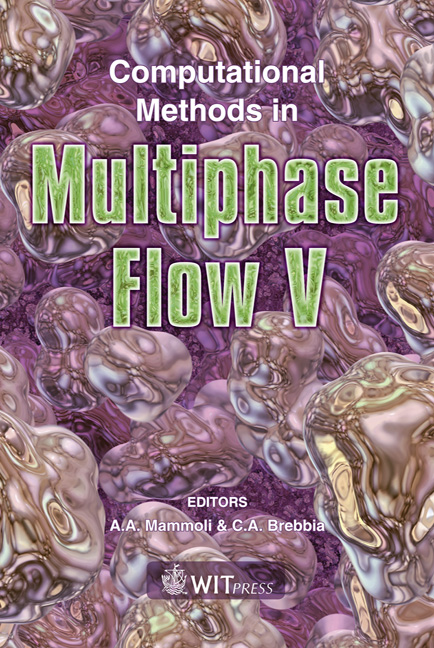Tube Bundle’s Cooling By Aqueous Foam
Price
Free (open access)
Transaction
Volume
63
Pages
10
Page Range
445 - 454
Published
2009
Size
453 kb
Paper DOI
10.2495/MPF090381
Copyright
WIT Press
Author(s)
J. Gylys, S. Sinkunas, T. Zdankus, M. Gylys & R. Maladauskas
Abstract
Single-phase coolants, such as water, oil or air, are mostly used in industrial apparatus. But usage of two-phase coolants, such as aqueous foam, can significantly reduce material and energy expenditures, simultaneously sustaining proper heat transfer intensity on heated surfaces. Comparing with single-phase coolant, the two-phase foam coolant has additional possibility to change the intensity of heat transfer by changing volumetric void fraction of foam. This enables wider range of regulation of heat transfer intensity. An experimental investigation of heat transfer between in-line tube bundle and aqueous foam flow was performed. One type of aqueous foam – statically stable foam – was used as a coolant. Vertically downward moving foam flow crossed the in-line tube bundle. Spacing between the centres of the tubes across the in-line tube bundle was 0.03 m and spacing along the bundle was 0.03 m. During an experimental investigation it was determined dependence of heat transfer intensity on flow parameters: flow velocity, volumetric void fraction and liquid drainage from foam. Apart of this, influence of tube position in the bundle on heat transfer was investigated. Experimental results were summarized by criterion equations, which are suitable for the design and calculation of foam apparatus. Mentioned experiments are the continuation of our previous investigation with foam flow moving downward after 180-degree turning. Keywords: heat transfer, aqueous foam flow, in-line tube bundle, void fraction of foam.
Keywords
heat transfer, aqueous foam flow, in-line tube bundle, void fraction of foam





